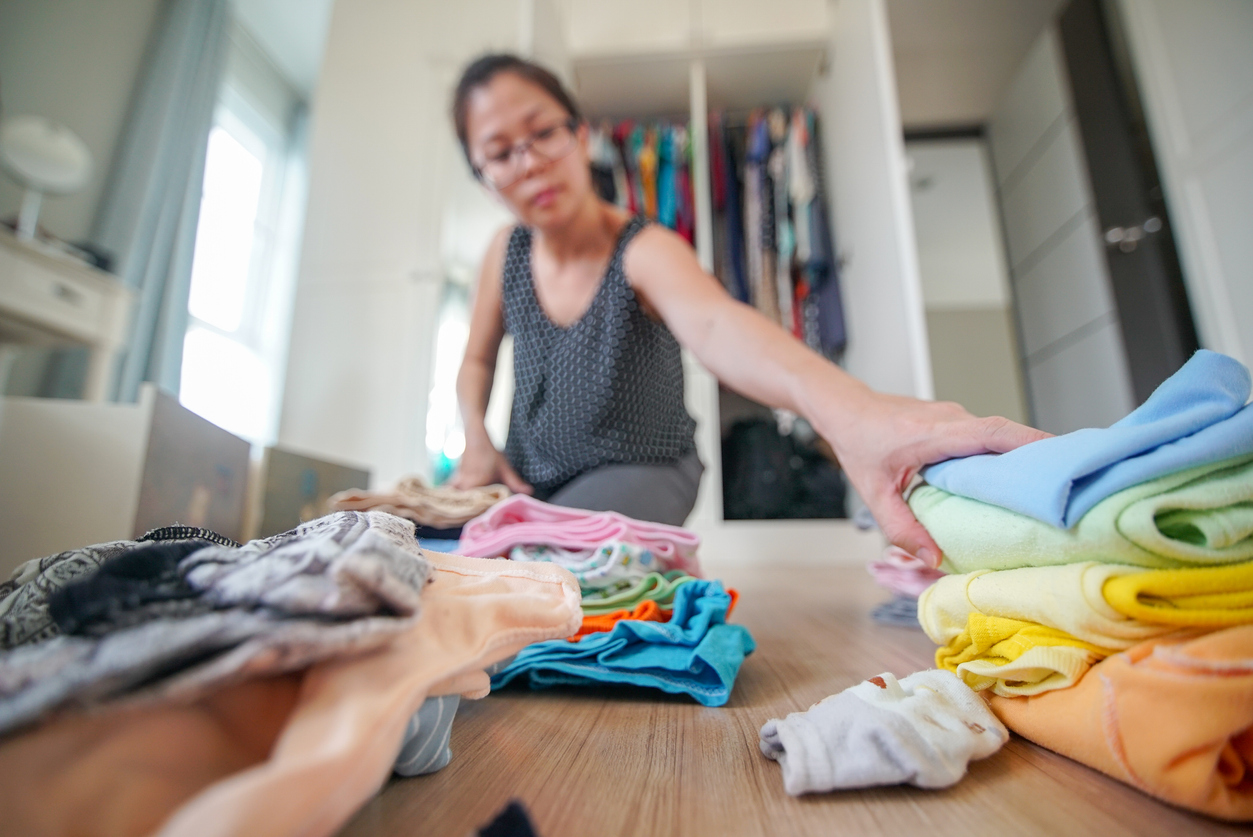Deal With The Disarray: Can You Organize (Or Dispose Of) Your Clutter This Year?
January 11, 2023

It’s once again that time of year to take stock of your life and rethink the way forward. What do you want to do differently this year? How can you go about organizing for change or clearing the way for a new path? Well, perhaps you can start literally by clearing a path in your home. That is, does the clutter and chaos that fills your house get in the way of organizing and enjoying your life? Are you (figuratively or literally) weighed down with too many possessions and piles? As we’ve done in previous years, where we’ve discussed organizing strategies and entities that will take or sell your donations, it’s useful to consider the most recent expert advice on clearing the clutter from your home and life.
First, it’s important to determine whether your chaos is due to just the accumulation of too many items (a few too many irresistible after-holiday sales?) or whether something more psychologically serious is going on. That is, do you suffer merely from clutter or are you heading down the rabbit hole of hoarding? Hoarding is considered an anxiety disorder and for at least 25% of those who suffer from it, the problem surfaces after age 40 or 50. It’s not a completely understood disorder, but it’s not easily solved just by cleaning up a space or throwing out the excess- the underlying causes of the behavior need to be addressed.
But assuming your space suffers from garden variety clutter, there’s much that can be done to address the turmoil. Experts seem to agree that to tackle the trouble, you need to start out with modest goals and accomplish some small wins with inconsequential items. For example, maybe you can tackle the kitchen drawers that contain duplicates or an excess number of tongs or trivets. Some experts recommend you start with a deep clean so that you can truly understand the scope of your problem, the extent of your space, and which items should have a home and which should not. Moreover, given that staying organized is an ongoing task rather than once and done, the goal is to limit your tendency to create disarray in the first place. Suggestions? Simple things like putting your clothes away (hamper or closet) at the end of the day (some even suggest a handy discard bag for items that no longer make the cut), making your bed each morning, throwing away junk mail the moment you receive it and wash the dishes (or fill the dishwasher) as soon as the meal is done. In essence, don’t allow objects to accumulate so the task of decluttering can become easier. As decluttering expert Star Hansen makes clear, you need a “declutter philosophy.” Her philosophy? “What becomes clutter and where your clutter accumulates can say a lot about what’s going on with you.”
But perhaps it’s not just hoarding that has a psychological component. Experts know that even clutter can be the result of mental health concerns or even just fatigue with all that takes up space in your life. And perhaps some of those random objects that seem to be forever on your bookshelf or hanging in your closet or sitting on your kitchen counter hold more meaning than meets the eye. That’s surely the case with writer Amy Ettinger, who in a recent essay in Next Avenue discusses the difficulty she has in purging her closet of some clothing that came from her mother. Or, as writer Rob Walker reminds us, some of those everyday nonessential items might actually play a positive role in our lives. As he writes in a recent Op-Ed in The New York Times, the current “villainization of clutter” may miss a central point: “The objects you already own are much more likely to be interwoven with the people and experiences that give life meaning.” For Walker, the objects in question include a silly ceramic leprechaun that he associates with his mother. His warning to us all? “Be careful what you purge. Today’s decluttering victim is tomorrow’s lost object, and lost objects are forever. That’s why I’m keeping my embarrassing ceramic leprechaun. I’m learning to appreciate it. It holds a connection for me — to my mother and to all her best intentions and instincts — that I never want to lose.”







